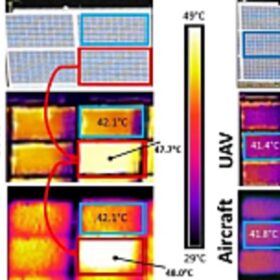Stacking algorithm for PV module fault diagnosis
Researchers in Norway have created a PV module fault diagnosis technique based on a stacking algorithm. It utilizes augmented digital images of PV modules collected by unmanned aerial vehicles and is able to detect snail trails, delamination, glass breakages, discoloration, and burn marks.
Drones vs. aircrafts for PV plant inspection
Scientists in Italy have investigated the performance of drones and a human-crewed airplanes for carrying out aerial infrared thermography inspections on PV power plants. According to their findings, airplanes may be more cost-effective.
Computer model for residential solar fault detection
Developed by US scientists, the model detects and classifies panel faults without the need for additional sensors. It leverages correlations between the power produced by adjacent panels to detect deviations from a panel’s otherwise expected behavior.
All-weather imaging tech to detect PV module faults
The system combines software that applies a modulated electric current to the PV panels and an indium-gallium-arsenide (InGaAs) photodiode detector that takes a sequence of images of the panels. According to its creators, the proposed technique works with any lighting conditions and in all weather.
Artificial neural networks and fuzzy logic for fault detection in PV systems
Researchers in China have developed a fault detection method for PV systems that combines both neural networks and fuzzy logic principles within a single framework. It considers seven input variables and an output variable.
Sensorless fault-detection method for rooftop, large-scale solar
Turkish researchers have developed an algorithm to distinguish faults and changes in PV plant output. The sensorless method only uses electrical data gathered from the DC inputs of inverters. They tested it on 8.5 MW of ground-mount PV at nine sites, as well as 8.2 MW across 18 rooftops.
New algorithm to identify faults in PV systems
A new algorithm identifies five kinds of faults in PV systems, while also detecting when faults have been resolved to prevent false detections. It is based on the least significant difference test, which is a set of individual t-tests comparing the means of two or more pre-determined groups.
New methods for fault detection revealed at EU PVSEC
Quality control and problem detection and classification was brought into focus at the conference in Marseille. A packed house at a session focused on the latest fault detection techniques indicated the high level of interest in the field.








